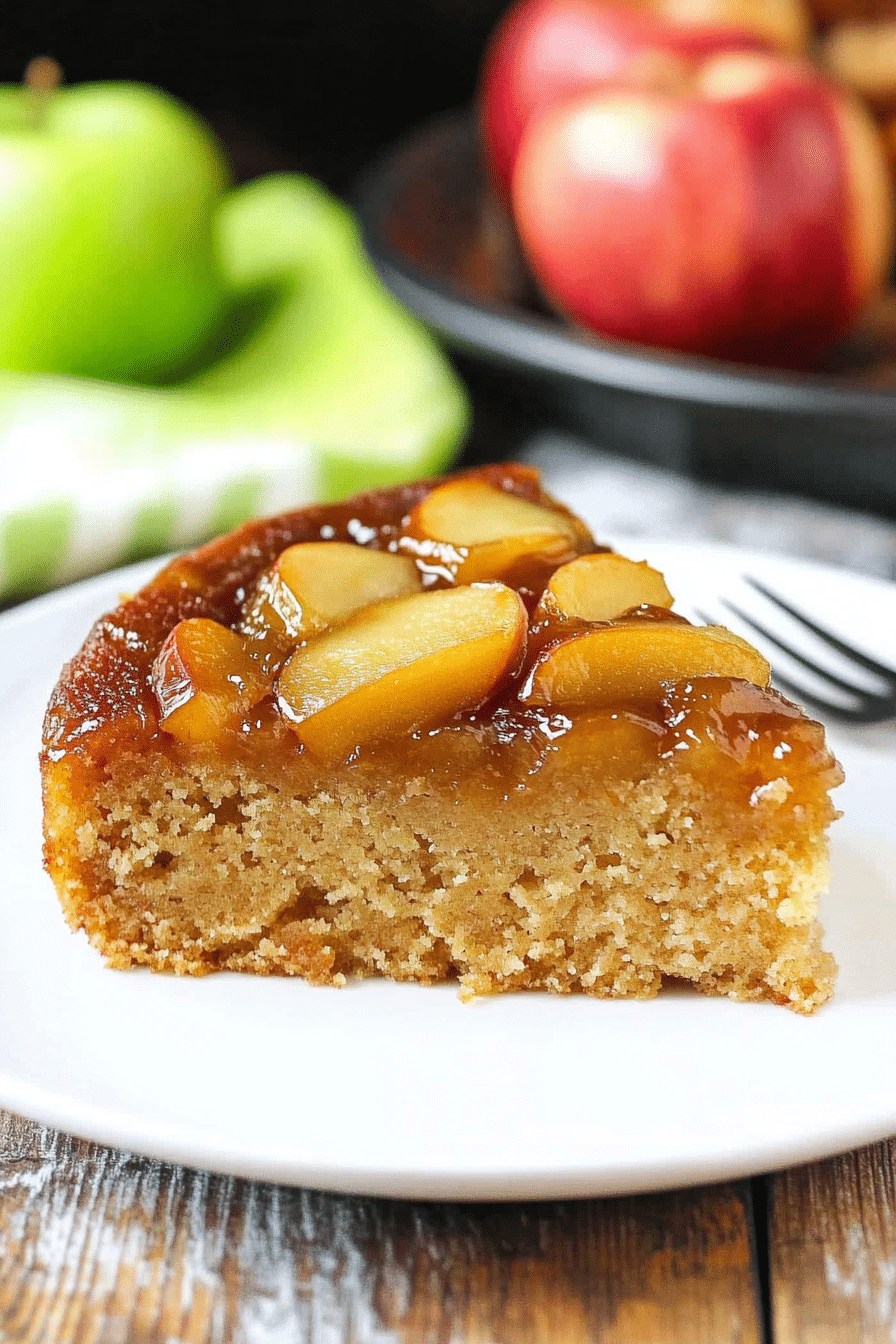There’s a loaf I reach for on Sundays that fills the kitchen with something like a warm hill of olive oil and rosemary — rosemary focaccia bread. I learned this trick from my grandmother, who baked with a whisper of rosemary and a glass of wine nearby. The aroma is almost theatrical; it invites everyone to the table. This version is incredibly forgiving and friendly, with a crisp, dimpled crust and a chewy crumb. It’s like garlic bread’s sophisticated cousin, but with more olive oil and garden-green flavor. I always do this when I want something comforting but not heavy — it pairs with tomato soup, a simple cheese plate, or beans and greens. The best part? It’s surprisingly easy for weeknights, and it makes the kitchen smell like a memory. Rosemary Focaccia Bread is the kind of recipe that disappears in minutes at my house, especially when I drizzle extra oil and sprinkle flaky salt while it’s still warm. I’ve learned a few tweaks along the way, and I’ll share them honestly so you can skip the drama and dive straight into tasting that rosemary perfume.

What is Rosemary Focaccia Bread?
Rosemary Focaccia Bread is a simple, olive-oil bathed flatbread pressed into a sheet pan, poked with dimples, and finished with a fragrant rosemary glaze. Think of it as bread that’s meant to be torn with your fingers, not counted by slices. The name comes from focaccia, the ancient Italian bread that loves a generous slick of oil and a shower of coarse salt. It’s essentially a dough that comes together with minimal fuss, then bakes into a golden crust with a soft, airy interior. The rosemary isn’t just a garnish here—it’s a partner in crime with olive oil, garlic, and a touch of sea salt, guiding every bite toward bright, piney notes. I love that this isn’t finicky, and it doesn’t demand perfect timing to wow a hungry crowd. It’s a cozy kitchen ritual, something my family looks forward to whenever I pull out the olive oil and a fresh sprig of rosemary.
Why you’ll love this recipe?
What I love most about this rosemary focaccia is the way the flavors bloom with minimal effort. The aroma alone is enough to turn a Tuesday into something celebratory. Here’s why this recipe sticks around the recipe box:
- Flavor: The bread carries a lush olive-oil kiss and that bright rosemary spell. Each bite is warm, aromatic, and slightly al den
- Simplicity: It’s a straightforward dough, not a complicated pastry. You can mix, rise, press, and bake in a single evening
- Cost-efficiency: Pantry staples carry the whole loaf—flour, olive oil, yeast, and herbs. It’s a budget-friendly luxury that feeds a crowd.
- Versatility: Serve it as a starter, alongside soup, with a dip, or as the base for a rustic pizza night. It’s a forgiving canvas for whatever you’ve got on hand.
- What I love most about this recipe is how forgiving it is: if the dough tears a little or the holes aren’t perfectly even, it still tastes like a victory. It’s a lifesaver on busy nights, and the kids actually ask for seconds. I’ve even tested it with a splash of lemon zest in the oil for a bright twist that still keeps the rosemary at center stage.
How to Make Rosemary Focaccia Bread
Quick Overview
This Rosemary Focaccia Bread starts with a soft, airy dough that rises while you prep the pan and toppings. You’ll swirl an infused oil through the dough, press dimples all over the surface, and bake it until the crust blushes golden brown. The result is a loaf that’s crisp on the outside, plush on the inside, and perfumed with rosemary. The beauty is in the little touches—teasing flavor from olive oil, salt flakes that crunch when you bite, and herbs that whisper of a sunny hillside. It’s accessible enough for beginners, but special enough to feel like a treat for guests.
Ingredients
For the Main Batter:
- 3 cups bread flour (or all-purpose flour, if that’s what you have on hand)
- 1 cup warm water (about 110°F/43°C – you should be able to dip your finger in and feel it’s cozy, not hot)
- 2 tsp instant yeast
- 1 tsp sugar or honey (helps the yeast wake up)
- 2 tbsp extra-virgin olive oil, plus more for the pan
- 1 tsp fine sea salt
For the Filling:
- 1/4 cup extra-virgin olive oil
- 2–3 garlic cloves, finely minced
- 2–3 tsp finely chopped fresh rosemary (after removing the tough stems)
- Pinch of sea salt and cracked black pepper
For the Glaze:
- 2–3 tbsp olive oil
- Optional: a pinch of flaky sea salt and a squeeze of lemon juice
Step-by-Step Instructions
Step 1: Preheat & Prep Pan
Heat your oven to 425°F (220°C). Generously oil a rimmed sheet pan or a shallow baking tray—you want a nice sheen on the crust as it bakes. If you’re using parchment, brush the parchment with a little oil too so the dough releases easily. I like using a pan that’s big enough to give the dough room to spread; it makes the edges crispier and the center pleasantly chewy. This step is where that aroma starts to build—you can almost smell the rosemary waking up as the pan enjoys its oil bath.
Step 2: Mix Dry Ingredients
In a large bowl, whisk together the flour, salt, and sugar. The dry mix sets the stage for a light crumb, so don’t rush this part. I’ve found that letting the salt and sugar dissolve a moment while the flour rests helps everything distribute evenly once the yeast hits the bowl.
Step 3: Mix Wet Ingredients
In a separate bowl, whisk warm water, yeast, and 2 tablespoons of olive oil until the mixture feels smooth. If you’re using active dry yeast instead of instant, you’ll want to let it sit for 5–10 minutes until it’s foamy. I’ve sometimes skipped this step and just trusted instant yeast—the dough rises nicely anyway, but the foamy proof adds an extra assurance that the yeast is alive and well.
Step 4: Combine
Pour the wet mixture into the dry ingredients and mix until a shaggy dough forms. It will look a little sticky, and that’s exactly how it should be. Turn the dough onto a lightly floured surface and knead just enough to bring it together into a smooth, cohesive ball. Overworking can make the crumb tight, and you want that open, airy interior. Let the dough rest for a few minutes if it’s stubbornly sticky—this helps the flour hydrate and makes shaping easier.
Step 5: Prepare Filling
Meanwhile, whisk together the olive oil, minced garlic, rosemary, and a pinch of salt and pepper. This is your fragrance bomb—the good stuff that makes the focaccia feel like a garden on a plate. If you’re short on time, you can infuse the oil by warming it gently with the chopped rosemary for a few minutes, then letting it cool a bit before using. I’ve learned that a lightly warmed oil carries more aroma into the dough, but cold oil also works—just brush generously and let the steam do the rest during baking.
Step 6: Layer & Swirl
Press the dough into the oiled pan, spreading it to the edges. Here’s where the fun begins: drizzle the rosemary-garlic oil over the surface and use your fingers to press it into the dough in little pockets. Don’t worry about perfect seams—focaccia loves a rustic look. Then, using your fingertips, make dimples all over the surface. These dimples are the secret to a crust that’s crisp at the edges and tender in the center. If you want extra rosemary bursts, sprinkle a few chopped needles on top and press them in gently.
Step 7: Bake
Bake for 20–25 minutes, or until the edges are deeply golden and the surface is glossy with olive oil. If your oven runs hot or cool, you may need a 2–3 minute adjustment. If the top browns too quickly, tent lightly with foil and finish baking. The scent while this bakes is what dreams are made of—rosemary, garlic, olive oil, and a touch of salty air right from the oven.
Step 8: Cool & Glaze
Remove the focaccia from the oven and let it rest on the pan for 5–10 minutes. While it’s warm, brush with a little more olive oil and scatter flaky sea salt across the surface. If you’re using lemon, a quick squeeze over the top adds brightness that cuts through the richness beautifully. The key here is to work while it’s warm—the glaze sinks in and shines the crust without sogging it.
Step 9: Slice & Serve
Transfer to a cutting board and cut into thick squares or rustic fingers. Serve warm so the aroma stays at its peak. Rosemary Focaccia Bread is fantastic on its own, but it shines when you pair it with tomato soup, a bright herb salad, or a simple plate of olives and fresh mozzarella. My family loves tearing off a piece and dipping it into a pot of olive oil with a splash of balsamic—clean, cozy, and totally addictive.
What to Serve It With
Rosemary focaccia is a flexible partner for many meals. Here are some ideas that feel special but are totally doable on a weeknight or a relaxed weekend:
For Breakfast: Puffy eggs scrambled with a kiss of Black Pepper, alongside a spread of ricotta and honey on a warm slice. Steam a pot of coffee and let the day begin with that comforting savoriness.
For Brunch: Tomato-basil bruschetta topping on warm squares, a dollop of whipped feta, and a crisp Cucumber Salad on the side. It’s an easy centerpiece that gets oohs and aahs without extra stress.
As Dinner: Pair with a bowl of minestrone or a hearty lentil soup to soak up the last spoonful. The herbs brighten the meal, and the crust stays a little crackly even when you dunk.
For Cozy Snacks: Tear-and-share with a platter of roasted vegetables, a quick white bean dip, or a plate of marinated olives. It’s a crowd-pleaser that still feels like a little indulgence.
Family traditions often involve a “Sunday focaccia” moment at our house—the first warm bite signals the week can still be kind. I remember my sister sneaking a corner while the rest of the table debated about the best olive oil to drizzle. We still laugh about how the bottom sometimes caramelizes to a toasty crust, almost like a small burnt sugar note that somehow tastes amazing. This is the kind of bread that invites conversation, story-sharing, and a little kitchen dancing. Rosemary Focaccia Bread isn’t just a recipe—it’s a memory you can bake tonight.
Top Tips for Perfecting Your Rosemary Focaccia Bread
These little adjustments make a big difference, and they come from years of tweaking, tasting, and listening to the oven whisper.
Rosemary Prep: Remove the woody stems and finely chop the needles for the most even, fragrant flavor. Dry rosemary thoroughly if you’re harvesting from a garden; excess moisture can dull the perfume.
Mixing Advice: Don’t overwork the dough. You want a relaxed gluten structure that yields a chewy crumb. Gentle folding during the first rise helps distribute flavor without toughening the texture.
Swirl Customization: Different oils bring different personalities. Try a mix of extra-virgin olive oil and a touch of toasted sesame oil for a nutty twist. Add a few crushed red pepper flakes if you want a hint of heat—it wakes the rosemary without overpowering it.
Ingredient Swaps: If you don’t have bread flour, use a mix of all-purpose and a spoonful of vital wheat gluten to improve chew. You can swap garlic for shallots for a milder fragrance, or add a handful of grated lemon zest for brightness without losing the rosemary identity.
Baking Tips: If you bake on a stone or steel, preheat thoroughly and slide the pan onto the hot surface for a quick, blistering crust. If using a darker pan, reduce heat by 25°F to prevent excessive browning. Check doneness at the 20-minute mark; ovens vary a lot in how quickly they brown.
Glaze Variations: For a glossy finish, brush warm oil with a pinch of salt right after baking. A light lemon glaze or a sprinkle of smoked sea salt can add a surprising finish that makes the aroma feel even brighter.
This is the part where I remind myself that imperfect edges are a badge of character. The more you bake, the more you’ll discover little tweaks that fit your kitchen, your pan, and your taste. I’ve learned that small changes—like a splash more olive oil or an extra minute in the oven—can shift the balance from comforting to downright addictive. The best part is that Rosemary Focaccia Bread forgives you for the little mistakes, and rewards you with that unmistakable warm, olive-oil scent that fills the room.
Storing and Reheating Tips
Leftovers are a rare treasure with this bread, but when they happen, here’s how to keep the magic intact.
Room Temperature: The bread stays delicious for up to 24 hours in a breathable bag or wrapped in a clean tea towel in a cool spot. If the day’s humidity is high, the crust may soften a touch—reheat to restore the snap.
Refrigerator Storage: I don’t recommend refrigerating focaccia for longer than a day; it tends to dry out. If you must, wrap tightly and reheat in a 350°F (175°C) oven for 5–7 minutes to refresh the crust.
Freezer Instructions: Freeze unfrozen slices in a freezer-safe bag for up to 2 months. Thaw at room temperature, then reheat in a 350°F (175°C) oven for about 5 minutes to revive the crust.
Glaze Timing Advice: If you’re freezing, skip the final glaze until reheating—brush on fresh olive oil and salt just before serving to refresh the surface and maintain a crisp crust.
In my kitchen, Rosemary Focaccia Bread is a testament to the beauty of simple ingredients when treated with patience. It reheats surprisingly well, and the aroma returns with it—like a small, comforting memory waking back up in the oven. If you try freezing, I’d love to hear how you feel about the texture after a quick reheat; I’ve found that a drizzle of fresh oil right before serving makes all the difference.
Frequently Asked Questions
Final Thoughts
Rosemary Focaccia Bread is the kind of recipe that earns its keep in a couple of hours and keeps on giving long after the meal. It’s forgiving, fragrant, and deeply satisfying—everything a comforting bread should be. When I want to slow down a little and savor a moment with family or friends, this is what I pull from the drawer: a simple dough, a garden of herbs, and a generous drizzle of olive oil. It invites conversation, laughter, and the blessing of a crust that crackles just right. If you try this, I’d love to hear how your rosemary perfumed loaf turned out and what you paired it with. Leave a comment, share your tweaks, and tell me about the moment you first tasted it. Happy baking!

Rosemary Focaccia Bread
Ingredients
Dough
- 1.33 cup warm water about 110°F
- 2 teaspoons sugar
- 0.25 ounce active-dry yeast
- 3.5 cups all purpose flour
- 0.25 cup extra virgin olive oil plus more for drizzling
- 2 teaspoons flaky sea salt plus extra for sprinkling
Toppings
- 2 sprigs fresh rosemary
Instructions
Preparation Steps
- In the bowl of a stand mixer, combine warm water and sugar. Sprinkle yeast on top and let it sit for 5-10 minutes until foamy.
- Add flour, olive oil, and salt to the bowl. Mix on low speed, then increase to medium-low and knead for 5 minutes. If the dough is too sticky, add an additional 1/4 cup of flour.
- Shape the dough into a ball. Grease the bowl with olive oil, place the dough back in, cover with a damp towel, and let rise in a warm place for 45-60 minutes, or until nearly doubled in size.
- Turn the dough onto a floured surface and roll into a circle or rectangle about 1/2-inch thick. Cover with a damp towel and let rise for another 20 minutes.
- Preheat oven to 400°F (200°C). Transfer the dough to a parchment-lined baking sheet or press it into a 9x13 inch baking dish. Poke deep dents all over the surface of the dough. Drizzle with olive oil and sprinkle with fresh rosemary needles and sea salt.
- Bake for 20 minutes, or until golden brown and cooked through.
- Remove from oven, drizzle with more olive oil if desired. Slice and serve warm.
Notes
Featured Comments
“Impressed! Clear steps and comforting results. Perfect for busy nights.”
“New favorite here — spot on. crowd-pleaser was spot on.”
“Super easy and turned out amazing! My family asked for seconds. Saving this one.”
“This sweet treat was absolutely loved — the light really stands out. Thanks!”
“Made it tonight and wow — crowd-pleaser! Will definitely make Rosemary Focaccia Bread again.”
“Packed with flavor and so simple. Exactly what I wanted from Rosemary Focaccia Bread.”












